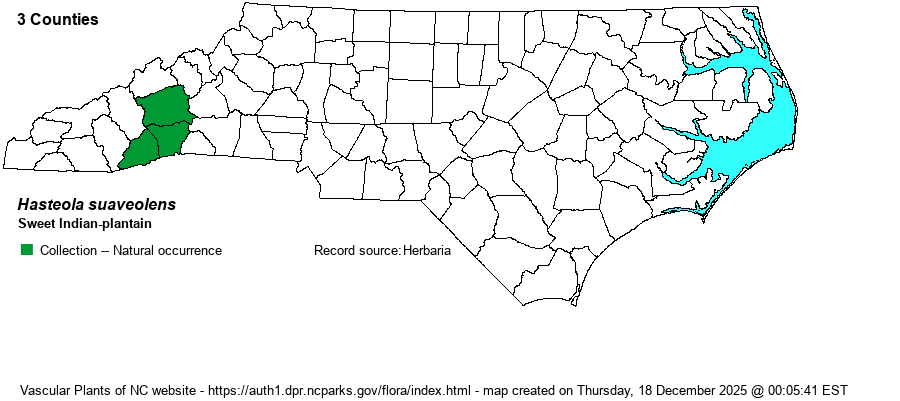| Author | (L.) Pojarkova | |
| Distribution | Southern Mountains only. Known in NC only from Buncombe, Henderson, and Transylvania counties.
MA to MN, south to southwestern NC, TN, and southeastern MO. | |
| Abundance | Very rare, and declining. The NCNHP lists only seven records, with four historical. The only known extant sites -- 1) discovered fairly recently by Ed Schwartzman at Jackson Park in Henderson County, 2) by Aster Ayer in Transylvania County, and 3) along the French Broad River south of Asheville in Buncombe County. The State Status has been upgraded to Endangered. | |
| Habitat | Bottomlands, floodplain forests, and streambanks -- typically in partial sun of openings. The Jackson Park site is a swamp forest with some openings; the Buncombe site is a wet/moist powerline clearing in full sun. | |
| Phenology | Flowering and fruiting August-October. | |
| Identification | Plants grow to about 3-4 feet tall, a single stem from broad, triangular, basal leaves. Stem leaves are reduced in size. The inflorescence is composed of several branches, forming a generally flat-topped array; heads are all yellowish white disk florets. The strongly triangular shape of the middle lobe of the leaves is quite obvious, especially on robust 3-4-foot tall plants in this species. | |
| Taxonomic Comments | In the past it has been treated in the genus Senecio or Cacalia. Treated as C. suaveolens in RAB (1968).
| |
| Other Common Name(s) | Sweet-scented Indian-plantain, False Indian-plantain | |
| State Rank | S1 | |
| Global Rank | G4 | |
| State Status | E | |
| US Status | | |
| USACE-agcp | | |
| USACE-emp | | |

